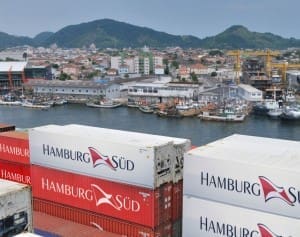THERE is now a real prospect that negotiations for the world’s largest regional trade deal – the Trans-Pacific Partnership Agreement (TPP) – are finally on the cusp of conclusion.
Probably because of its regional nature and complexity, the TPP hasn’t attracted the same level of mainstream interest as the landmark bilateral free trade agreements we have been able to quickly conclude over the past year with South Korea, Japan and China, the major economies of north Asia. There has also been some focus on the agreement we hope to strike with India by the end of this year.
But the TPP is a big deal, in many respects a free trade agreement times 12 for which Australia and 11 other countries have been negotiating since 2008. It carries transformational promise.
Not only will it afford new levels of market access for our goods, services and investment, but it will put in place the architecture and common set of trading rules to allow for more seamless trade between countries accounting for 40 percent of the world’s economy.
As well as covering the traditional areas of trade like eliminating tariffs, the TPP will for the first time address contemporary items such as e-commerce, intellectual property and investment flows as well as broad-ranging disciplines on environmental and labour issues and settings to specifically benefit small and medium-sized enterprises (SMEs).
Inevitably, a successful conclusion will mean higher growth, more jobs and improved living standards for the countries involved in the years and decades ahead.
For Australia it means new levels of market access for our exporters into markets where we don’t have existing trade agreements such as Canada, Mexico and Peru and improved access to those countries where we do have existing trade and investment agreements such as the United States, Singapore, Vietnam, New Zealand, Japan, Chile, Brunei and Malaysia.
 Take Japan for example. We are already benefiting from the bilateral deal we did with Japan that affords Australia as a major agricultural exporter unprecedented levels of access to the world’s third-biggest economy. We have locked in these gains over our competitors and the TPP offers the prospect of any enhanced levels of access also flowing through to us once it comes into force.
Take Japan for example. We are already benefiting from the bilateral deal we did with Japan that affords Australia as a major agricultural exporter unprecedented levels of access to the world’s third-biggest economy. We have locked in these gains over our competitors and the TPP offers the prospect of any enhanced levels of access also flowing through to us once it comes into force.
Australia’s exports of goods and services to TPP countries are currently worth around $105 billion, which represents 32 per cent of our total exports and we’d expect this to significantly grow off the back of the agreement, particularly given the increasing middle-class demand in the region for many things aligned to Australia’s strengths. These include resources and energy, food and agribusiness, international education, health and medical research and tourism along with a long list of services and high-end manufactured products that cluster around these.
The TPP also allows for other countries to join in the future, which would further multiply the gains.
It will also significantly improve access and reduce costs for the likes of Australian high-end manufacturers and other contributors to increasingly important global value chains (GVCs), many of which are SMEs. GVCs represent the full range of activities or inputs required to make something. It is now typical for components or partially finished items to move through multiple countries before their ultimate completion. Individual countries also export components that contribute to this process.
In 1990, 20 per cent of goods and services globally ended up as intermediate contributions in other goods and services. Today, that figure is 70 per cent. A Boeing aircraft for instance draws on suppliers from more than 100 countries. These are the types of essential processes in the modern trading system that the TPP – through common sets of behind-the-border trading rules and the like – will make more efficient and increasingly so as more countries join.
Ultimately, reduced costs in supply chains benefit consumers in the same way reduced or eliminated tariffs on imported goods do. An acceptable conclusion of the TPP is finally within reach, perhaps just two months away but there are some difficult issues still to resolve and we won’t sign up unless our best interests are assured across the agreement.
If the last hurdles can be cleared, Australia will be in a position to benefit from a deal to seriously expand trade and investment through the 21st century.




HAVE YOUR SAY